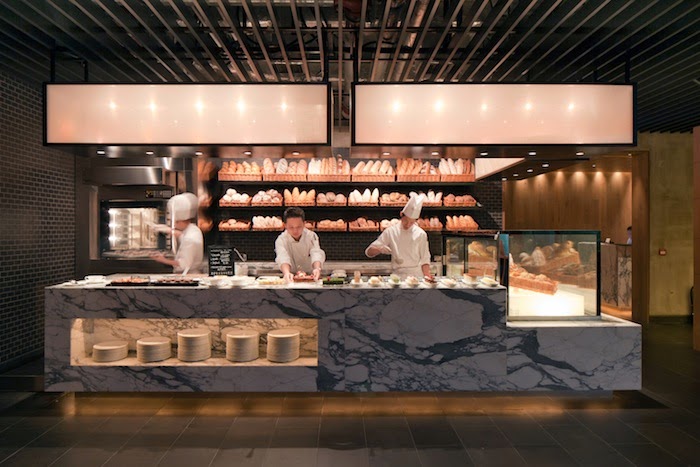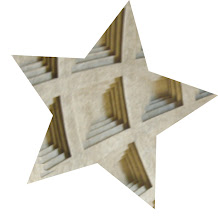Después del primer día de toma de contacto, el Martes fue el día
turístico al uso en Estambul. Visitamos Aghia Sofia, la Mezquita Azul y el gran
Bazar (Kapaliçarsi).
Como arquitecto la visita a Aghia Sofía fue casi una
experiencia religiosa. Palabras como majestuoso, imponente o monumental,
describen el edificio desde el exterior. Pero tener la oportunidad de
adentrarse en su interior me hizo empequeñecerme, no solo por la escala del
templo sino por lo que representó en su época. Aún sabiendo el propósito del
imperio romano de Oriente de crear el mayor templo jamás construido. Aclamaba
ser la fortaleza e insignia de una cultura avanzada y que abogaba por una
sociedad plural que respetaba las diferentes culturas que la formaban. Por ello
no es de extrañar que la planta de Aghia Sofía fuera central. Como si de un
gran foro romano se tratara, los asistentes al templo conversaban bajo la
cúpula de tales dimensiones que asimilaba al cielo abierto, con la única
diferencia que este no era celeste sino dorado por los mosaicos que cubrían la
estructura abovedada.
Una de las principales características de las iglesias
bizantinas son sus mosaicos. En este caso de tal belleza que ni los sultanes se
atrevieron a destruir y buscaron alternativas para cubrir las imágenes que
están prohibidas por el Corán.
En las naves superiores sigue impresionando la grandeza
de la obra. Que ha resistido el paso del tiempo con bombardeos y terremotos
incluidos. Los datos calculan que 3000 personas estuvieron involucradas durante
los 100 años que duro sus construcción de los cuales 1000 eran técnicos
especializados. Estos números aun dan más vértigo al mirar por los balcones de
las galerías que rodean en la planta superior el Vacío donde ahora dominan en
sus cuatro esquinas las palabras del Corán.
Después de darnos un respiro comiendo Las típicas
albóndigas turcas. Nos encaminamos a ver uno de los templos por no decir el
segundo templo mas importante de la
religión musulmana tras la cábala.
La mezquita azul impone desde la lejanía porque recuerda
a cuentos de las mil y una noches. Las proporciones son perfectas incluso menos
toscas que las de Aghia Sofía. De primera vista pudiera parecer que la belleza
de este templo musulmán pudiera competir con la grandeza de Sofía. Pero desde
el análisis frío y critico a una religión relativamente moderna que lo único
que ha hecho es tomar de otras lo que le "interesa". De la cultura y
sociedad con la que arrasaron tomaron su templo mas importante, y lo que
hicieron es copiar la forma para un uso completamente opuesto. Si el propósito
de Aghia Sofía era el dialogo y el intercambio cultural. La religión musulmana
se basa en la mera repetición de la palabra del profeta. No necesitan un
espacio de tales magnitudes. No requieren ni una estructura con una forma
cruciforme que recuerde a una simbología como es el caso del cristianismo. Es
la palabra del profeta la que dicta su cultura basada 100% en la religión,
donde no se aceptan interpretaciones de ningún tipo.
La única conclusión que me queda es volver a criticar la
falta de evolución que caracteriza a la religión musulmana. Si la religión
Cristina ha estado siempre abierta a transformarse com el paso del tiempo: del
gótico al renacimiento pasando por el neoclasico y hoy en día con edificaciones
que buscan la simbología y la espiritualidad del ser humano. Las mezquitas son
simplemente la copia de un templo pagano que se transformo en símbolo en si
mismo.
Esta critica viene desde el respeto y por
supuesto reconozco que el ritual no se reduce solo a lo descrito antes. La
cultura musulmana en el pasado esta asociada a innovación y desarrollo. Muy de
cerca nos toca el reino del Al-Andalus el cual era mucho más avanzado en muchos
aspectos al de Castilla y que echamos de la península ibérica. Subrayo comp
bien sabido es que la conquista de los árabes no trajo mas que beneficio a
nuestras tierras. Y la riqueza en el caso antiguo de mi cuidad natal Sevilla,
viene de ese primer asentamiento árabe, que aun perdura si uno pasea por las
calles del barrio de Santa Cruz. Por lo que concluyo que quizás esta critica se
localiza mas bien solo en Turquía y en el sultanamet turco que acabo con una
culturales avanzada, al igual que el reino de Castilla hizo en la península
ibérica.














.jpg)
.jpg)
+(1).jpg)
.jpg)
.jpg)
.jpg)
.jpg)
.jpg)
.jpg)
.jpg)

.jpg)
.jpg)
.jpg)
.jpg)
.jpg)
























































